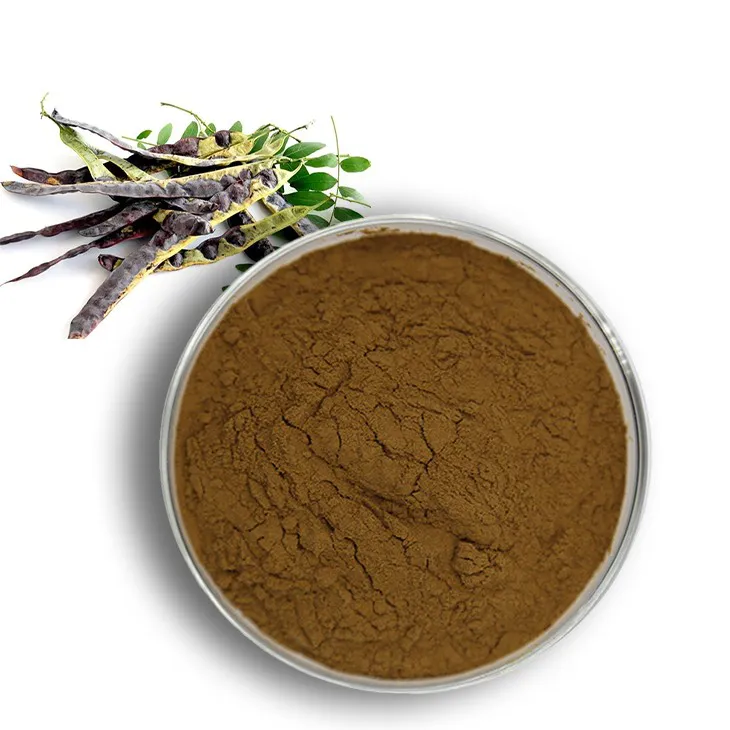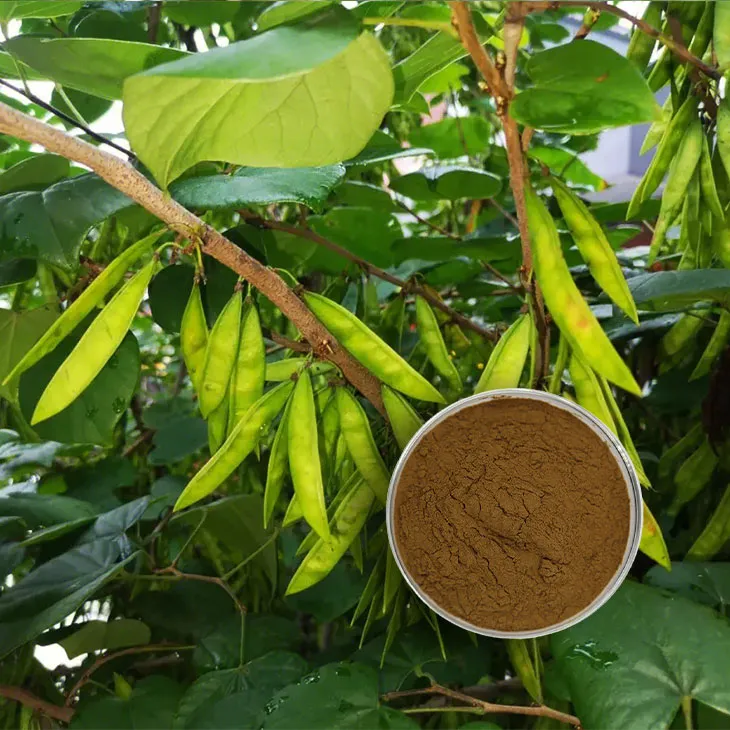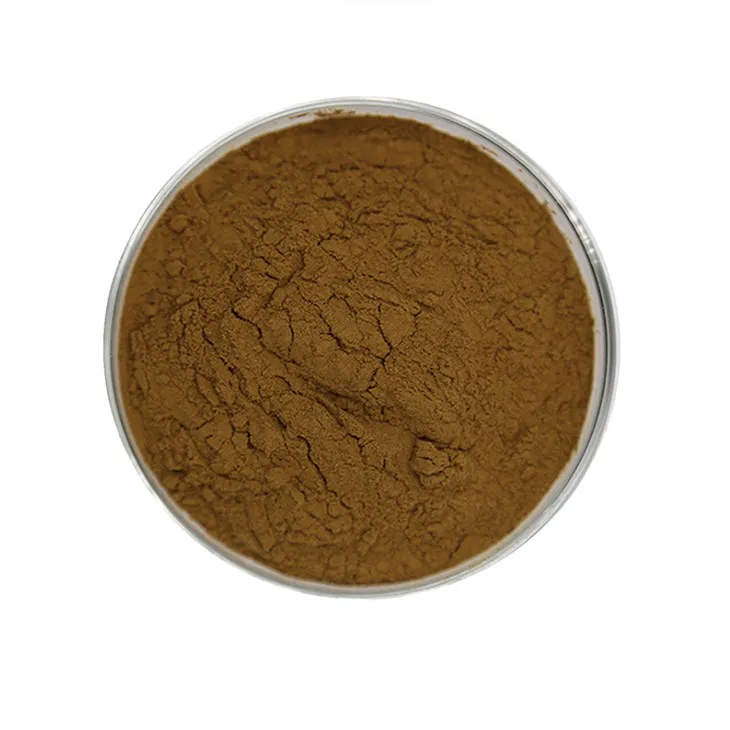- 0086-571-85302990
- sales@greenskybio.com
Toxicological Insights: Safety Assessment of Crude Saponin Extract
2024-08-16

1. Introduction
Crude Saponin Extract has been drawing increasing attention in various fields such as medicine, food, and cosmetics. However, ensuring its safety is of paramount importance before widespread application. Toxicological assessment plays a crucial role in determining the potential risks associated with the use of crude Saponin Extract. This article aims to comprehensively analyze the safety aspects of crude Saponin Extract through exploring its chemical composition, acute and chronic toxicity data, and safety margins.

2. Chemical Composition of Crude Saponin Extract
Crude saponin extract is a complex mixture of various saponin compounds. Saponins are glycosides that consist of a sapogenin moiety (aglycone) and a sugar chain. The diverse chemical structures of saponins contribute to their different biological activities and potential toxicities.
2.1 Sapogenin Types
There are different types of sapogenins in saponin extracts, such as triterpenoid sapogenins and steroid sapogenins. Triterpenoid sapogenins are often associated with anti - inflammatory and antioxidant properties. However, they may also interact with cellular membranes and enzymes in ways that could potentially lead to toxicity at high concentrations. Steroid sapogenins, on the other hand, have different physiological effects and may pose different toxicity risks depending on their specific structures and the tissues they interact with.
2.2 Sugar Chains
The sugar chains attached to the sapogenin also play an important role in the properties of saponins. Longer or more complex sugar chains may affect the solubility, bioavailability, and toxicity of saponins. For example, they can influence how saponins are absorbed, distributed, metabolized, and excreted in the body. Changes in the sugar chain structure can lead to differences in the interaction of saponins with biological molecules, which in turn can impact their toxicity profiles.

3. Acute Toxicity of Crude Saponin Extract
Acute toxicity studies are designed to evaluate the immediate and severe adverse effects that occur within a short period after exposure to a substance. For crude saponin extract, several studies have been conducted to determine its acute toxicity.
3.1 Animal Studies
In rodent models, such as mice and rats, different doses of crude saponin extract have been administered orally, intravenously, or intraperitoneally. The observed symptoms and mortality rates are then recorded. In general, at relatively low doses, the animals may show no obvious adverse effects. However, as the dose increases, symptoms such as lethargy, reduced food intake, and abnormal behavior may be observed. At extremely high doses, mortality can occur.
- The LD50 (lethal dose 50, the dose at which 50% of the test animals die) value is an important parameter in acute toxicity assessment. For some crude saponin extracts, the oral LD50 in rats may range from several hundred milligrams per kilogram to several grams per kilogram, depending on the source and composition of the extract.
- It is important to note that different species may have different sensitivities to crude saponin extract. For example, mice may tolerate higher doses in some cases compared to rats.
3.2 In vitro Studies
Cell culture - based in vitro studies also provide valuable information on the acute toxicity of crude saponin extract. Different cell lines, such as liver cells (HepG2), kidney cells (HEK293), and intestinal epithelial cells (Caco - 2), can be used to assess the cytotoxicity of saponin extract.
- Exposure of these cells to saponin extract may lead to changes in cell viability, as measured by assays such as the MTT assay or the LDH release assay. At high concentrations, saponin extract can cause cell death, which may be due to membrane disruption, interference with intracellular signaling pathways, or other mechanisms.
- However, the in vitro results need to be interpreted with caution as they may not fully reflect the in vivo situation. For example, the lack of a complete physiological environment in vitro may lead to over - or underestimation of the toxicity.
- Some studies have reported that chronic exposure to relatively high doses of crude saponin extract may lead to liver and kidney damage. For example, elevation in liver enzyme levels (such as ALT and AST) and histological changes in the liver, such as fatty degeneration or necrosis, may be observed. In the kidneys, signs of nephrotoxicity, such as proteinuria or changes in kidney histology, may occur.
- However, at lower doses, the long - term effects may be minimal or absent. This suggests that there may be a dose - response relationship in chronic toxicity, similar to that in acute toxicity.
- Several assays have been used to evaluate the genotoxicity of crude saponin extract, including the Ames test (for mutagenicity in bacteria), the comet assay (for DNA strand breaks in cells), and the micronucleus test (for chromosomal damage in cells). Some studies have shown that under certain conditions, saponin extract may exhibit genotoxic effects, although the results are not always consistent across different studies.
- Regarding carcinogenicity, long - term animal studies are required to determine whether chronic exposure to crude saponin extract can lead to an increased incidence of cancer. So far, the evidence for saponin extract - induced carcinogenicity is limited, but more research is needed to fully clarify this issue.
- For example, in a chronic toxicity study in rats, if no adverse effects are observed at a dose of 100 mg/kg/day, then this dose can be considered as the NOAEL for that particular study. However, it should be noted that NOAEL values may vary depending on the study design, species, and the specific endpoints evaluated.
- If the NOAEL in animals is 100 mg/kg/day and the estimated human exposure level is 1 mg/kg/day, then the safety margin is 100. A larger safety margin indicates a lower risk of toxicity in humans. However, it is important to consider the uncertainties in extrapolating animal data to humans, such as differences in metabolism, pharmacokinetics, and sensitivity.
- However, in the cosmetics industry, the regulations may be less stringent, although there are still requirements regarding the safety of ingredients. Some countries may require cosmetic products containing saponin extract to be labeled with appropriate warnings if there are potential risks.
- Also, international harmonization of regulations would be beneficial to facilitate the global trade of saponin - containing products while ensuring their safety. This would require cooperation among regulatory authorities from different countries to develop common standards and guidelines.
- Toxicological Evaluation of Saponin - Rich Extracts
- Crude Saponin Extract: A Comprehensive Review of Toxicity Studies
- Understanding the Safety Profile of Saponin Extracts in Toxicological Context

4. Chronic Toxicity of Crude Saponin Extract
Chronic toxicity studies are essential for evaluating the long - term effects of repeated exposure to crude saponin extract. These studies typically involve longer - term administration of the extract to animals at different doses and the monitoring of various physiological and pathological parameters.
4.1 Long - term Animal Experiments
In long - term rodent studies, crude saponin extract is often administered daily for several months or even years. The animals are closely observed for signs of toxicity, including changes in body weight, organ function, and histopathological changes in tissues.
4.2 Genotoxicity and Carcinogenicity
Another important aspect of chronic toxicity is the assessment of genotoxicity and carcinogenicity. Genotoxicity refers to the ability of a substance to damage DNA, which can potentially lead to mutations and cancer.

5. Safety Margins of Crude Saponin Extract
The concept of safety margins is crucial in determining the safe use of crude saponin extract. Safety margins are calculated based on the no - observed - adverse - effect level (NOAEL) obtained from toxicity studies and the expected human exposure levels.
5.1 Determination of NOAEL
The NOAEL is the highest dose of a substance at which no adverse effects are observed in a toxicity study. In the case of crude saponin extract, NOAEL values are determined from both acute and chronic toxicity studies.
5.2 Calculation of Safety Margins
Once the NOAEL is determined, safety margins can be calculated. The safety margin is usually expressed as a ratio of the NOAEL to the estimated human exposure level.
6. Regulatory Considerations
Given the potential toxicity of crude saponin extract, regulatory authorities play an important role in ensuring its safe use. Different countries and regions may have different regulations regarding the use of saponin - containing products.
6.1 Current Regulatory Status
In some countries, saponin - containing products are classified as dietary supplements or herbal medicines. In these cases, certain quality control and safety requirements are imposed. For example, manufacturers may be required to provide evidence of safety and efficacy based on scientific studies.
6.2 Future Regulatory Directions
As more research on the toxicity of crude saponin extract is conducted, regulatory requirements are likely to evolve. There is a need for more standardized toxicity testing methods to ensure consistent and reliable safety assessment across different products.
7. Conclusion
In conclusion, the safety assessment of crude saponin extract is a complex and multi - faceted process. Understanding its chemical composition, acute and chronic toxicity, safety margins, and regulatory considerations is essential for its proper use. While some aspects of its toxicity have been studied, more research is needed, especially in terms of long - term effects, genotoxicity, and carcinogenicity. By conducting comprehensive toxicological studies and implementing appropriate regulatory measures, we can ensure the safe use of crude saponin extract in various fields.
FAQ:
Question 1: What are the main factors influencing the toxicity of crude saponin extract?
The main factors include its chemical composition. Different types of saponins within the extract may have varying levels of toxicity. For example, the structure and functional groups of saponins can affect how they interact with biological systems, potentially leading to toxic effects. Also, the purity of the extract matters. Impurities in the crude extract might contribute to or modify the overall toxicity profile.
Question 2: How is acute toxicity of crude saponin extract determined?
Acute toxicity is typically determined through in - vivo experiments on animals. A common approach is to administer different doses of the crude saponin extract to a group of test animals (such as rats or mice) and then observe their responses over a short period, usually 24 - 48 hours. Mortality rate, changes in behavior, and physiological parameters like body weight, organ function (e.g., liver and kidney function tests) are measured to assess the acute toxicity level. Based on these data, the LD50 (lethal dose for 50% of the test population) can be calculated.
Question 3: What about the chronic toxicity of crude saponin extract?
Chronic toxicity studies involve long - term exposure of test animals to the crude saponin extract at relatively low doses. This can last for several weeks, months, or even years. The researchers monitor various aspects over time, including growth and development, reproductive function, immune system response, and the development of any pathological changes in organs. Chronic toxicity data helps to understand the long - term safety of the extract and potential cumulative effects that may not be evident in acute toxicity studies.
Question 4: How are safety margins calculated for crude saponin extract?
The safety margin is calculated by comparing the no - observed - adverse - effect - level (NOAEL) obtained from toxicity studies (both acute and chronic) with the expected human exposure level. For example, if the NOAEL in an animal study is 100 mg/kg and the estimated human exposure from a particular use is 1 mg/kg, the safety margin would be 100 - fold. A larger safety margin indicates a greater level of safety for human use.
Question 5: What regulatory considerations should be taken into account for the use of crude saponin extract?
Regulatory considerations should include setting appropriate safety standards based on the toxicity data. This may involve defining maximum allowable levels of the extract in products for human or animal use. Labeling requirements are also important, clearly indicating the presence of the saponin extract and any associated risks. Additionally, depending on the source and intended use of the extract, different regulatory agencies may have specific guidelines for quality control, manufacturing processes, and post - market surveillance.
Related literature
- ▶ Hesperidin
- ▶ Citrus Bioflavonoids
- ▶ Plant Extract
- ▶ lycopene
- ▶ Diosmin
- ▶ Grape seed extract
- ▶ Sea buckthorn Juice Powder
- ▶ Fruit Juice Powder
- ▶ Hops Extract
- ▶ Artichoke Extract
- ▶ Mushroom extract
- ▶ Astaxanthin
- ▶ Green Tea Extract
- ▶ Curcumin
- ▶ Horse Chestnut Extract
- ▶ Other Product
- ▶ Boswellia Serrata Extract
- ▶ Resveratrol
- ▶ Marigold Extract
- ▶ Grape Leaf Extract
- ▶ New Product
- ▶ Aminolevulinic acid
- ▶ Cranberry Extract
- ▶ Red Yeast Rice
- ▶ Red Wine Extract
-
Marigold Extract
2024-08-16
-
Golden Seal Extract
2024-08-16
-
Black Pepper Extract
2024-08-16
-
Hericium erinaceus extract powder
2024-08-16
-
Passionflower Extract
2024-08-16
-
Citrus Aurantium Extract
2024-08-16
-
Phellodendron Extract
2024-08-16
-
Almond Extract Powder
2024-08-16
-
Curcuma Longa Extract/Turmeric extract
2024-08-16
-
Longan Extract
2024-08-16





















